| Capulin Cherry - Prunus salicifolia | |
|---|---|
 Fig. 1  Cherry habit of the Prunus serotina (close relative of the P. salicifolia) 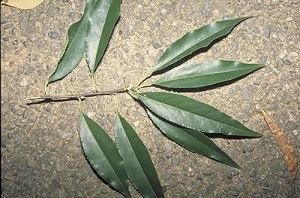 Fig. 2  Mexican Bird Cherry, P. salicifolia leaves  Fig. 3  P.salicifolia red new growth  Fig. 4  P. salicifolia leaves and flower buds  Fig. 5  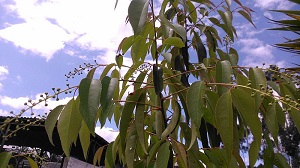 Fig. 6  P. salicifolia leaf habit 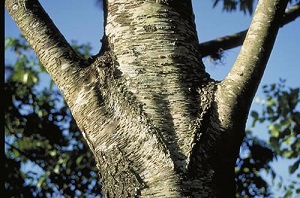 Fig. 7  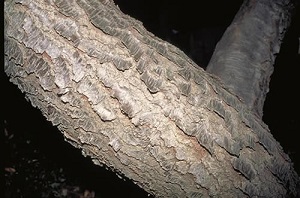 Fig. 8  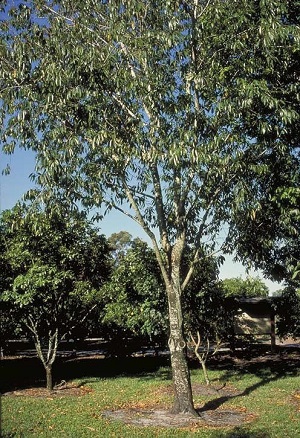 Fig. 9  Mexican Bird Cherry, P. salicifolia |
Scientific
name Prunus salicifolia HBK. Common names Mexican bird cherry, capulin, capuli, capoli or capolin in Colombia and Mexico, and cerezo, detsé, detzé, taunday, jonote, puan, palman or xengua; cerezo criollo in Colombia; capulin, cereza, cereza común, or wild cherry in Guatemala; capuli in Bolivia; capuli or black cherry in Eucador 1 Synonyms P. salicifolia Kunth; P. salicifolia var. acutifolia S. Watson 4 Relatives Sweet Cherry (P. avium), Western Sand Cherry (P. besseyi), Myrobalan Plum (P. cerasifera), Sour Cherry (P. cerasus), European Plum (P. domestica), Beach plum (P. maritima), Japanese Plum (P. salicina), Nanking Cherry (P. tomentosa), Common Chokecherry (P. virginiana) and others 2 Family Rosaceae Origin Native to the highlands of Mexico and Western Guatemala 3 USDA hardiness zones 9b-10 Uses Fruit; landscape specimen Height 40-50 ft (12-15 m) 1 Spread 15 ft (4.6 m) Crown Crowns become one-sided unless they receive light from all around the plant 5 Plant habit Semi deciduous; erect tree; umbrella-shaped 2 Growth rate Fast Trunk/bark/branches Stout trunk and rough, grayish bark 2 Leaves Alternate; aromatic leaves; 2 3/8-7 in. (6-18 cm); dark green; glossy, finely toothed; new growth rosy 1 Flowers White, fragrant flowers are formed on medium-length racemes from Jan. to March Fruit Pendulant clusters of 5-20 fruit; round; 3/8-3/4 in (1-2 cm); red or nearly black; tender skin; pale-green, juicy pulp; sweet or acid; slightly astringent 1 Season May to August Light requirement Full sun or partial shade 4 Soil tolerances Well-drained; acidic soil for best growth; non-compacted soil 4 pH preference 5.5.-6.5 Drought tolerance Somewhat tolerant of dry conditions; roots should be kept moist and should not be subjected to prolonged drought 5 Aerosol salt tolerance Unknown Soil salt tolerance Not salt tolerant Cold tolerance 20 °F (-6.7 °C) Roots Fairly shallow root system 5 Invasive potential * None reported Pest resistance Few pests or diseases affect the capulin in Florida 3 Known hazard The interior of the pit, as well as the twigs and foliage, are toxic 3 Reading Material Capulin Cherry, Archives of the Rare Fruit Council of Australia Capulin Cherry, California Rare Fruit Growers Capulin, Fruits of Warm Climates The Capulin, Manual of Tropical and Subtropical Fruits The capulin is a true cherry and doesn't really belong with fruits of warm regions. However, it must be included here to distinguish it from the Jamaica cherry (q.v.), for the two share a number of colloquial names. 1 Origin The capulin cherry is native and common throughout the Valley of Mexico from Sonora to Chiapas and Veracruz and possibly western Guatemala. 2 Description The tree is upright in habit. The trunk is strong and dense; young branches are supple and tough. The capulin has good landscape value. the tree is vigorous and grows rapidly. The capulin deserves wider planting in Florida and is worthy of additional efforts aimed at improvement. 3 Capulin cherries are quite attractive, both when in bloom with dangling racemes covered with masses of flowers and after fruit set when the racemes are thick with green, light red or deep red ripening fruit. 2 This species is closely related to Prunus serotina, but it has larger edible fruits. Flowers Flowers, borne in slender, pendent racemes with 1 or more leaves at the base, are about 3/4 in (2 cm) wide with white petals and a conspicuous tuft of yellow stamens. 1 Capulin Cherry trees are related to Northern Cherry trees, such as Bing Cherries. Unlike their relatives, Capulins have a dormancy period that is triggered by day length rather than by cold temperatures and therefore do not need cold winter weather to regulate their yearly flowering and fruiting cycle. Fruit The aromatic fruit is round, 3/8 to 3/4 in (1-2 cm) wide, with red or nearly black, rarely white or yellowish, smooth, thin, tender skin and pale-green, juicy pulp of sweet or acid, agreeable, but slightly astringent flavor. There is a single stone with a bitter kernel. 1 As many as 15 or 20 fruits sometimes develop on a raceme, but half or more fall before reaching maturity. 2 The trees will produce fruit 2 to 3 years after planting, and under the right conditions will set more than one crop per season. For reasons unknown trees with gray bark seem to produce larger fruit than those with darker bark. 2 Varieties Until recently, the capulin was exclusively reproduced from seed. Therefore, the capulin is still in its infancy in terms of improvement. Preferred cultivars include 'Ecuadorian,' 'Fausto,' 'Harriet, 'Huachi Grandem' and 'La Roca Grande.' The quality of inferior varieties and seedlings is often disappointing. 3 Harvesting Like other cherries, the fruits are ready to harvest when they has developed full color and yield to gentle pressure. The skin is thin and tender but sufficiently firm for the fruit to resist bruising. 2 Pollination The flowers are much visited by honeybees. 1 Cross-pollination is not required. 2 Propagation Capulin cherries are easily propagated by seed but the fruit quality of seedling trees is quite variable. Seedling plants are typically used as rootstock for desired cultivars using tip, wedge or cleft grafts. The plants can also be propagated from hardwood cuttings for growth on their own roots. 2 Culture The tree appears to be tolerant of drought in its native habitat where roots are allowed to explore a large volume of soil, but growth is often poor in restricted soil spaces characteristic of urban areas. 5 Pruning The trees need very little pruning to remain productive, although some pruning is useful to keep them at a desired height and to facilitate fruit harvest. They will take radical pruning and can be grown as a fruiting hedge. 2 Fertilizing A regular fertilization program with slow release nitrogen is recommended to keep plants vigorous. Too much nitrogen in the soluble form could stimulate sprouting. 5 Irrigation Capulin cherries are somewhat drought tolerant, but they grow better and produce better fruit with regular watering, particularly during the period between flowering and fruiting. 2 Pests Few pests and diseases affect the capulin in Florida. In south Florida the Caribbean fruit fly pdf 6 pages sometimes invades the fruit. Mites and scales may require control. Birds occasionally raid the fruit. 3 Food Uses The ripe fruits are eaten raw or stewed; also are preserved whole or made into jam. In Mexico they are used as filling for special tamales. With skin and seeds removed, they are mixed with milk and served with vanilla and cinnamon as dessert. Sometimes the fruits are fermented to make an alcoholic beverage. 1 Medicinal Properties ** A sirup made of the fruits is taken to alleviate respiratory troubles. The leaf decoction is given as a febrifuge and to halt diarrhea and dysentery; also applied in poultices to relieve inflammation. A leaf infusion is prescribed in Yucatan as a sedative in colic and neuralgia and as an antispasmodic. The pounded bark is employed in an eyewash. 1 Other Uses The sapwood is yellow with touches of red. The heartwood is reddish-brown, fine-grained, very hard, strong, durable. It is used for furniture, interior paneling, cabinets, turnery and general carpentry. Old roots are valued for carving tobacco pipes, figurines, et cetera. 1 After 6-8 years it yields an excellent reddish lumber for guitars, furniture, coffins and other premium products. The wood is hard, is resistant to insect and fungus damage, and sells at high prices. 6 List of Growers and Vendors |
| Bibliography 1 Fruits of Warm Climates. Julia F. Morton, Miami, 1987. 2 "Capulin Cherry." California Rare Fruit Growers, crfg.org. 1997. Web. 19 Dec. 2013. 3 Boning, Charles. Florida's Best Fruiting Plants: Native and Exotic Trees, Shrubs and Vines. Sarasota, Pineapple Press, 2006. 4 "Prunus salicifolia synonyms." The Plant List (2010). Version 1. theplantlist.org. Web. 6 Apr. 2017. 5 "Mexican Bird Cherry, Prunus salicifolia." hort.ifas.ufl.edu. Landscape Plants. Environmental Horticulture. University of Florida. Web. 6 Apr. 2017. 6 "Capuli Cherry, Prunus capuli, P. salicifolia or P. serotina." rfcarchives.org.au. Archives of the Rare Fruit Council of Australia. Extract from 'Quandong' magazine of the West Australian Nut and Tree Crop Association. Vol 16 No.1. Jan. 1993. Web. 17 Jan. 2015. Photographs Fig 1 Prunus serotina. N.d. Forestventure. eol.org. Web. 6 Apr. 2017. Fig 2,7,8,9 Mexican Bird Cherry, Prunus salicifolia. Landscape Plants. Environmental Horticulture. University of Florida. hos.ifas.ufl.edu. Web. 6 Apr. 2017. Fig 3,4,6 Jose16mh. Prunus salicifolia. 2015. commons.wikimedia.org. (CC BY-SA 4.0). Web. 6 Apr. 2017. Fig 5 Anduze Traveller. Prunus salicifolia. 2007. flickr.com. (CC BY-NC-SA 2.0). Web. 17 Jan. 2015. * UF/IFAS Assessment of Non-native Plants in Florida's Natural Areas ** Information provided is not intended to be used as a guide for treatment of medical conditions. Published 17 Jan. 2015 LR. Last update 6 Apr. 2017 LR |
|